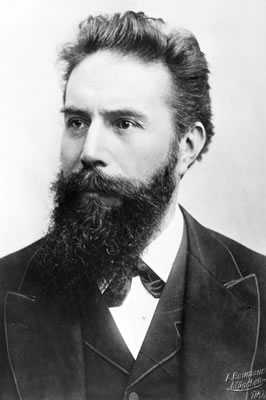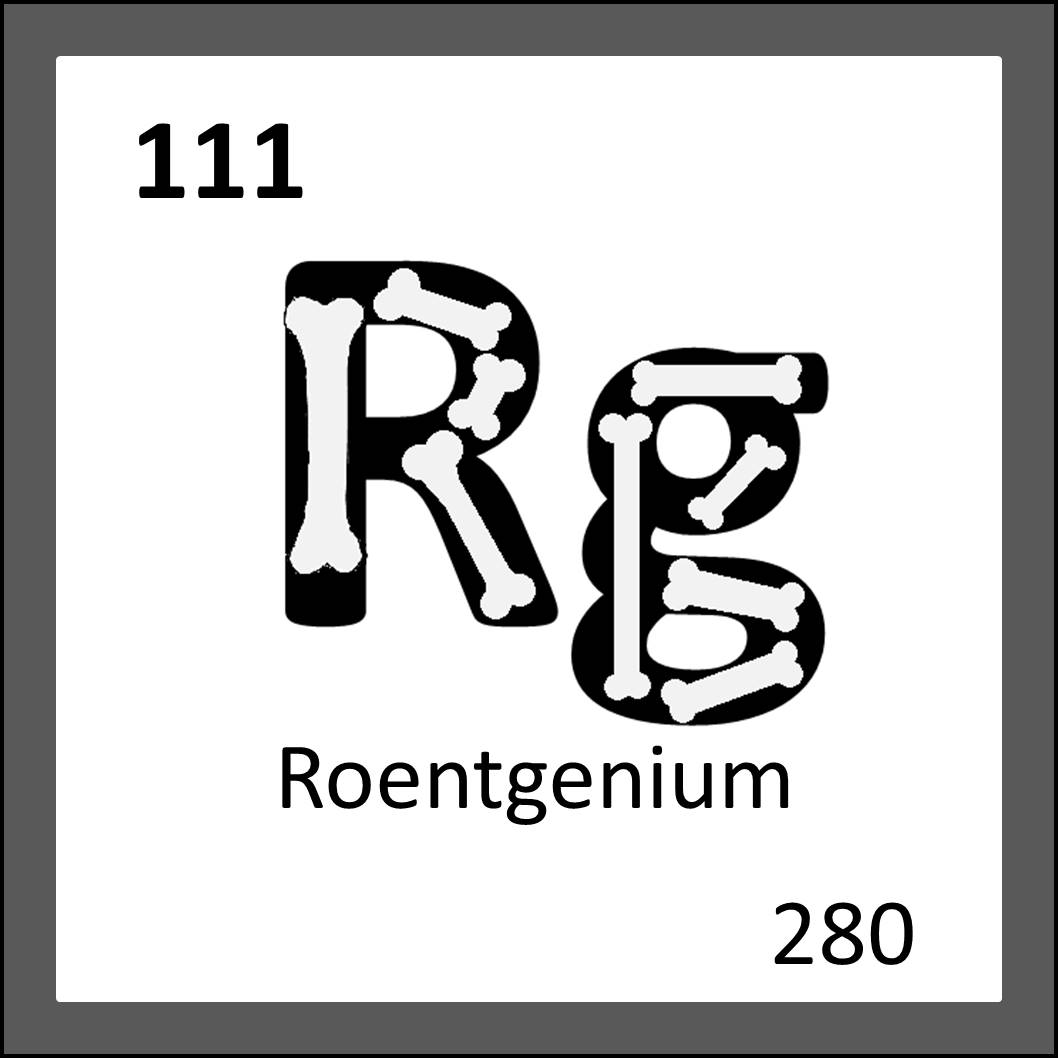

Left: Wilhelm Röntgen, discoverer of x-rays and inspiration for the name of roentgenium (right).
We’re back at the bottom of the periodic table, and we have another synthetic element named after an eminent scientist, roentgenium!
Element 111 was created in 1991 in Darmstadt, Germany by Sigurd Hoffman and his team. They bombarded bismuth with nickel nuclei to create the atoms, but as this experiment had been tried before in Dubna, Moscow, in 1986 without producing element 111, IUPAC were reluctant to give Hoffman’s team the discovery credit. When they repeated the experiment in 2002, they succeeding again in creating 3 atoms of roentgenium, and IUPAC acknowledged them as the creators.
Before roentgenium was put forwards by Hoffman’s team in 2004, the element had a placeholder name. This is quite common with the synthetic elements, where the placeholder name consists of the latin for each digit in the elements atomic number. For element 111, this was excellently unununium (effectively “one-one-one-ium”), but as I wasn’t on the final naming committee, that gave way to roentgenium.
In all fairness, the element was named after a famous German physicist called Wilhelm Röntgen. He received the first Nobel prize for Physics in 1901 for his discovery of a new form of radiation known as x-rays. He allegedly found out about x-rays when working with Crookes tubes, specialised electrical discharge tubes used to discover streams of electrons known as cathode rays (which later became essential for old fashioned televisions). He had wrapped the cathode ray tubes in black cardboard to prevent light from interfering with the experiment. However, he noticed that there was fluorescence coming from a screen painted with barium platinocyanide when it was near the cathode ray. This shimmering effect on the screen led Röntgen to realise that there must be a new type of ray that could pass through the cardboard to cause this. Whilst investigating what could and couldn’t block these new rays (that he named “X-rays” using the mathematical term “X” for when something is unknown), he stood in front of the emission and saw, to his surprise, his own skeleton on the barium platinocyanide screen. Eventually Röntgen took one of the most famous pictures (technically a radiograph) in the history of medicine: an x-ray of his wife, Anna Bertha’s hand. Unfortunately Röntgen had his lab notes burned upon his death, so we will never know exactly how the story went down, but this summary is what biographers have pieced together, and certainly we have the photograph of Anne Bertha’s hand as evidence for that part of it:

So that is roentgenium! It doesn’t have any applications as the most stable form currently known has a half-life of 100s, but still, it reminds us of the discoverer of x-rays, which is fun.
